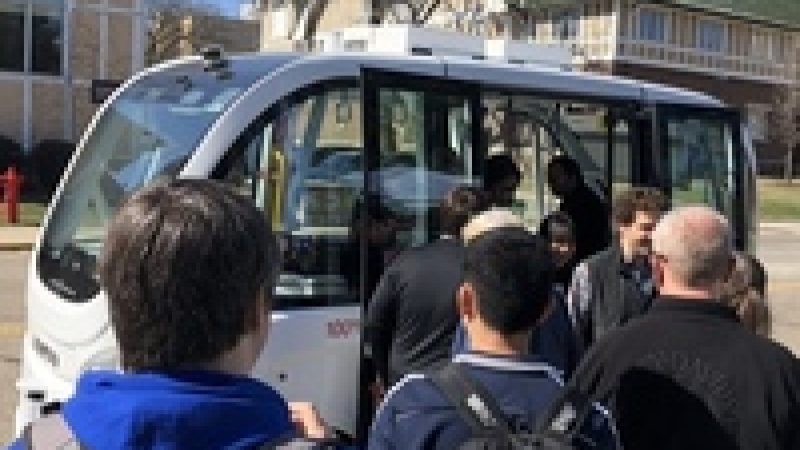I took a ride in a self-driving shuttle at UW-Madison, and got a firsthand look at how autonomous vehicles interact with a busy campus road.
Demonstrations were held Tuesday and Wednesday this week, giving the the public a chance to learn more about the capabilities and limitations of these technologies, all while scientists gathered valuable data on real-world performance.
The university was designated in early 2017 as one of 10 automated vehicle proving grounds around the country. These proving grounds provide opportunities for testing and evaluation in many settings and weather conditions.
“Public perception is the number one problem that automated vehicles have,” said Jonathan Riehl, an engineer with UW-Madison’s Traffic Operations and Safety Lab. “And there should be skepticism; we believe that too.”
From the outside, the shuttle looks like a white city bus shrunk down to the size of a passenger van. It’s made by French manufacturer Navya, and fits about 11 people. It relies on laser technology as well as cameras to track its surroundings and identify obstacles.
Under the supervision of a Navya employee, the shuttle continually looped around the campus block, encountering buses, other vehicles, bikers and pedestrians.
The interior of the shuttle resembled a smaller, cleaner bus complete with hand grips and cramped seats. But rather than the usual bored faces, riders on Wednesday were excited, and had plenty of questions for the operator.
See more at WisBusiness.com.



